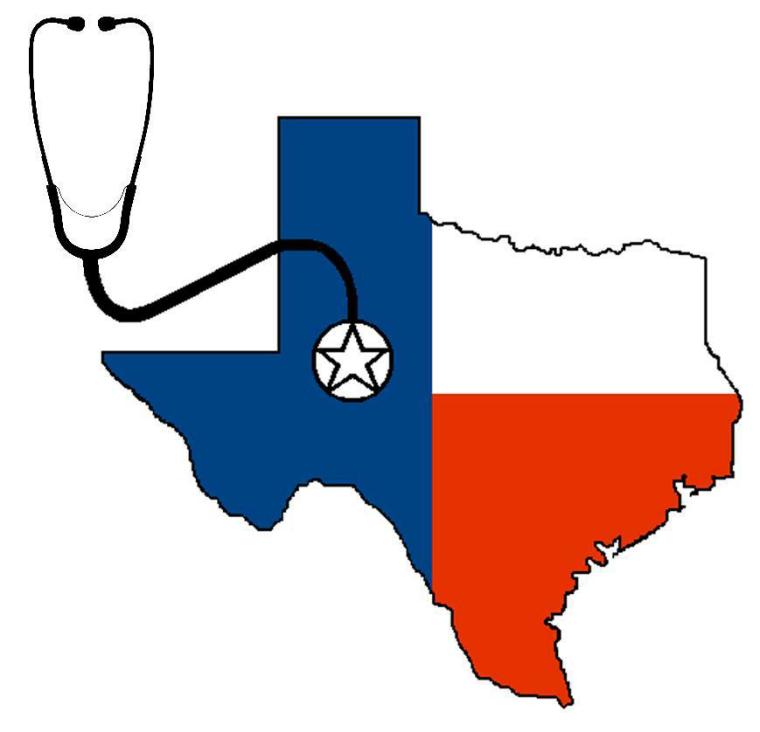
Legislation
On March 23, 2010, President Obama signed the comprehensive health reform legislation, the Patient Protection and Affordability Act into law. Read the summary written by the Kaiser Family Foundation.
While there is temporary relief for some, this costly new legislation will mostly enrich and further entrench the profit-driven, private health insurance industry. The bill would require millions of Americans to buy private insurers' defective products, and provide taxpayer subsidies to for-profit health plans. Only a single payer national health care program can successfully keep costs down, cover everyone with comprehensive care and maintain high quality.
"Medicare for All" Bills in the Senate & House of Representatives
H.R. 676: “The United States National Health Care Act"
or "Expanded & Improved Medicare for All Act ”
One way to provide all Texans with comprehensive, affordable health care is to pass national legislation that would apply to all Americans. Such a bill has been introduced in the U.S. House of Representatives.
H.R. 676, or “The United States National Health Care Act" (Expanded and Improved Medicare for All), provides all individuals residing in the United States and its territories comprehensive health care coverage. All medically necessary care would be provided, such as primary care and prevention, prescription drugs, emergency care, mental health and substance abuse services, long term care, chiropractic, hearing, vision and dental services. No deductibles, co-payments, co-insurance, or other cost-sharing will be required.
H.R. 676 was designed to serve the best interests of all Americans, not the interests of the insurance or pharmaceutical industries. Much misinformation is being generated to persuade us to not support passage of H.R. 676. We are being told it will raise taxes. The truth is that under H.R. 676, the average family’s overall health care costs will decrease. Predictable tax increases will replace unpredictable increases in premiums, co-payments, deductibles, co-insurance, and other out-of-pocket costs.
Check to see if your U.S. Representatives have signed on to H.R. 676. If they haven’t, send an email or letter stating you want them to support H.R. 676, the health care bill that brings everybody in and leaves nobody out.
Check Out


Health Care For All - Texas
S. 703: "American Health Security Act of 2009"
This bill proposes the establishment of nationwide health security programs that provide all U.S. citizens, national, or lawful resident aliens with health care. Each state must have a health security program. Private companies are not allowed to sell plans that duplicate benefits provided under the program.
The benefits offered by the American Health Security Act would replace the following programs: Medicare, Medicaid, State Children's Health Insurance (SCHIP) of the Social Security Act, the Federal Employees Health Benefits Program, and the Civilian Health and Medical Program of the Uniformed Services (CHAMPUS).
S. 703 also sets up an American Health Security Standards Board which would oversee the functioning and budget of the national health services program. Additionally, an American Health Security Advisory Council and an Advisory Committee on Health Professional Education would be created.
An American Health Security Quality Council would be put in place to oversee practice guidelines, medical review criteria, and minimum competence standards. It would also perform quality control reviews and performance evaluations. An Office of Primary Care and Prevention Research would be established as part of the Office of the Director of the National Institutes of Health (NIH).
The program would be paid for using a trust fund financed by tax liabilities and current health program receipts.


State Single Payer Bills
Vermont takes the lead in progress toward a state level single-payer health system
In January 2011, Vermont released the results of its study on how to achieve affordable quality health care in the state. Three proposals were anaylzed by a team headed by Dr. William Hsiao, a renown expert in health care systems. The state of Vermont
is likely to pass legislation that would put in place a modified single-payer health system by 2015. Vermont still must be granted a federal waiver in order to implement a single-payer system.
What the plan does:
1. All Vermonters will have access to health care and none will go broke due to health care expenses.
2. Although constrained by federal laws, the plan finds ways around most of these constraints and creates a common risk
pool and a state agency that acts act as the single payer for health care expenses.
3. The plan optimizes the use of federal funds for Vermont, and suggests ways in which funds that would have been
channeled to Vermont from the PPACA (Patient Protection and Affordable Care Act) will still be available for Vermont to
use even after they move beyond the required Exchange and to the creation of a single payer system. (The plan projects
this can be done by 2015 and assumes the state’s success in getting the required waivers).
4. The single payer pool is publicly financed. The plan suggests a payroll tax because it will retain tax exemptions for
business contributions, and is progressive in that those who earn more will pay more. Those whose income and earnings
are below a certain level will be exempt.
5. The plan raises reimbursement rates to providers that were below acceptable levels (such as Medicaid) and creates a more
sustainable reimbursement system and overall cost control
6. The plan will save Vermont over $500 million in its first year of implementation (2015) as compared to if they had only
implemented the PPACA (Patient Protection and Affordable Care Act), and greater savings will be realized in each
subsequent year.

Texans for a National Health Program
S. 915 "American Health Security Act of 2011"
H.R. 1200 "American Health Security Act of 2011"
Single Payer Companion bills introduced May, 2011
Senator Bernie Sanders introduced legislation (S. 915) to provide health care for every American through a Medicare-for-all type single-payer system.
Rep. Jim McDermott (D-Wash.) filed a companion bill (H.R. 1200) in the House to provide better care for more patients at less cost by eliminating the middle-man role played by private insurance companies that rake off billions of dollars in profits.
The twin measures, both called the American Health Security Act of 2011, would provide federal guidelines and strong minimum standards for states to administer single-payer health care programs.
American Health Security Act of 2011
http://thomas.gov/ (select bill number and insert S.915 or H.R.1200)